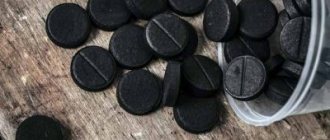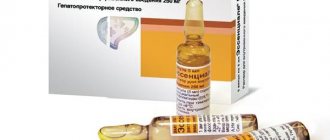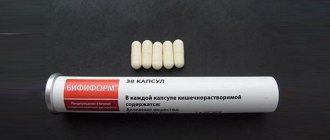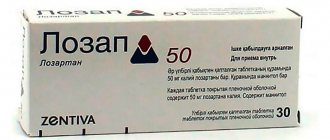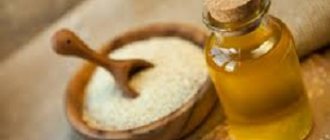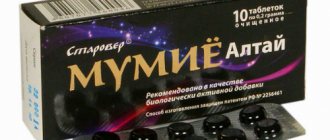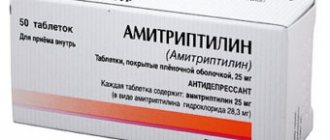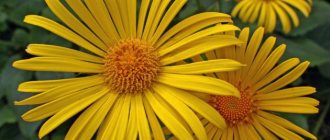✅Sage has a healing effect on the body as a whole and helps to endure the symptoms of menopause more easily. Using products based on this plant, you will certainly achieve the desired effect.
With age, the body begins to rebuild, as a result of which it loses some of its functions. Thus, closer to 50, every woman experiences menopause, which is accompanied by such unpleasant symptoms as increased sweating and hot flashes. You can make your well-being easier with the help of some medications, but herbal remedies also have a good effect, one of which is sage.
Sage for women's health
Sage is a herbaceous plant that is grown in Greece, Crimea, Russia, the Czech Republic and other countries. Its leaves are rich in essential oils, so they are often used to prepare various medicines.
Subscribe to our INSTAGRAM account!
Italy is considered the birthplace of sage. According to legends, it has been used to treat various pathologies since the time of Hippocrates, who called it a “sacred” herb.
Salvia officinalis has anti-inflammatory, hemostatic, antibacterial effects, and also helps to increase immunity and accelerate wound healing.
The plant is used for the following conditions:
- burns, frostbite;
- diseases of the digestive canal;
- viral diseases;
- atherosclerosis;
- bronchial asthma;
- diseases of the genitourinary system (cystitis, pyelonephritis, inflammatory processes of the genital organs);
- diseases of the nervous system;
- stomatitis;
- headache;
- inflammatory processes of the respiratory system (pharyngitis);
- menopause
The positive effect of sage on the body during menopause is explained by the high content of phytohormones - substances that affect the female body in the same way as estrogen.
Estrogen is a hormone produced in large quantities in the female body. It is responsible for reproductive function, so a decrease in its quantity leads to infertility.
Internal use
The herb contains camphor, borneol, cineole, triterpenoids, lactone, catechin, tannin, a substance similar to the female hormone estrogen, and B vitamins. For menopause and other diseases, it is used if there is a disorder of the gastrointestinal tract; prevents excessive sweating and stimulates the secretion of bile and urine. Due to its antimicrobial effects, this herb is used to treat gynecological inflammation and gastrointestinal tract infections, urinary tract infections (common symptoms of menopause).
You can prepare the following recipes:
- Infusion (tea): 2-3 tsp. sage herbs (fresh or dried) pour ¼ liter of boiling water, leave to infuse for 15 minutes, drink warm 1-2 cups a day. To relieve hot flashes, drink tea by the spoonful every 2 hours. For sleep disturbances and anxiety - 1 cup of iced tea in the evening.
- Tincture: 50 g of chopped sage herb (dry or fresh) pour 0.5 liters of high-quality pure alcohol. Leave in a closed bottle to brew in the dark at room temperature for 10 days with occasional shaking. Take 20-30 drops per 1 tbsp. water 3 times a day to relieve hot flashes.
- Powder made from crushed dried leaves. The dried leaves are crushed into powder, which is used 3 times a day against hot flashes, diarrhea, loss of appetite and stomach catarrh.
The benefits of sage for menopause and hot flashes
During the period of decline of reproductive function, changes occur in the body, as a result of which hormonal levels change. As a result, women complain of frequent hot flashes (their number per day can reach 30 or more).
Some women are treated in a hospital, as their condition worsens significantly, and only one in five feels virtually no discomfort.
Treatment is aimed at eliminating estrogen deficiency, so patients are prescribed hormonal drugs. However, the same result can be achieved by using sage-based products. This plant is most effective in correcting hormonal levels during menopause.
Subscribe to our Yandex Zen channel!
Using sage-based medicines for menopause, it is possible to achieve the following positive effects:
- Normalization of hormone levels.
- Eliminate headaches. This symptom is caused by vasospasm. The plant contains substances such as carotenes and saponins, which improve blood flow.
- Decreased production of sweat gland secretions.
As a rule, to achieve the effect, it is enough to take sage once a day.
- Relief from attacks of dizziness. During menopause, a woman's body loses a large amount of nutrients. Medicines based on sage help restore their quantity and eliminate unpleasant symptoms.
- Eliminate irritability. The vitamins that make up sage help normalize the psycho-emotional state, prevent the development of depression, and fight stress.
Thus, this plant can significantly reduce the intensity of symptoms during menopause. In order to completely get rid of them, it is necessary to combine the use of sage with traditional methods of treatment .
How to help with menopause
All the symptoms of menopause that a woman feels are the result of a lack of sex hormones, namely a violation of their production by the body. The use of sage during menopause helps restore hormonal levels. In addition, medications based on this plant will help reduce other negative manifestations of menopause:
- Neutralizes hyperhidrosis (relieves excessive sweating), directly affecting the productivity of the sweat glands.
- Helps reduce dizziness and migraines.
- Stabilizes sleep and blood pressure.
- Stops inflammatory processes developing in the genitourinary system due to age-related changes in the body.
- Helps get rid of hot flashes.
You should not use the above-ground part of the herb in monotherapy. They are effective only in complex treatment together with traditional medicine.
Contraindications
You should avoid using sage during menopause if you have the following conditions:
- epilepsy;
- diabetes;
- hypertonic disease;
- acute nephritis;
- endometriosis;
- decreased thyroid function;
- breast tumors, as well as surgery to remove them;
- dryness of mucous membranes (oral cavity, vagina and others);
Important! Sage is contraindicated during pregnancy and breastfeeding.
How to take - recipes
There are several ways to take sage during menopause. Decoctions, alcohol tinctures, and teas are prepared from medicinal raw materials. The essential oil of the plant can be used for therapeutic purposes. A healing infusion of sage that does not contain alcohol is prepared as follows:
- 1 tbsp. dry medicinal raw materials are poured with 200 ml of hot boiled water.
- The vessel is tightly closed and infused for 60-75 minutes.
- The infusion is filtered. This portion should be drunk throughout the day, divided into 3-4 doses.
The course of treatment with infusions without alcohol content is no more than 10 days. After a 14-day break, therapy is repeated.
Decoctions prepared from the above-ground part of sage have a good therapeutic effect. They are prepared like this:
- 2 tbsp. raw materials are poured with 500-700 ml of boiling water.
- The container and liquid are placed in a water bath and the contents are brewed for 15 minutes.
- Then the broth is infused for another 30 minutes and filtered.
The method of using the drink is no different from using the infusion. Take the drink three times a day, 50-70 ml. The course of treatment is no more than 2 weeks.
Sage tea is no less popular among women during menopause. To prepare it, the leaves of the plant are poured with boiling water. For the convenience of brewing the drink, the raw materials are sold in special filter bags. And to improve the taste of tea, you can add honey, mint leaves, etc. to it.
Cooking methods
To cope with the unpleasant symptoms of menopause, you can take sage in the form of:
- tea;
- infusion;
- decoction;
- alcohol tincture;
- juice;
- tablets.
Each of these products must be properly prepared to achieve the desired result.
Tea
Drinking sage tea eliminates hot flashes and helps reduce sweating.
To prepare, you need to take 1 tablespoon of dry raw materials, pour 400 ml of boiling water and let it brew for a while. The finished product is taken three times a day, 1 glass.
In addition, sage can be combined with other medicinal plants.
If headaches are pronounced during menopause, then brew tea as follows: combine 1 part of valerian, horsetail and three times as much sage. Pour 1 tablespoon of the resulting mixture into 200 ml of boiling water and leave for about 5 minutes, then strain. Divide the resulting volume into 2 doses and drink per day. It is not recommended to drink this tea before bed.
The duration of tea treatment is no more than 15 days, after which you need to take a break of 1–2 weeks.
Infusion
To prepare a healing infusion, you need to pour 1 tablespoon of dried sage leaves with 200 ml of boiling water, let the product brew for 1 hour, then strain the liquid. It is recommended to drink the resulting volume within 24 hours. Take 1 dessert spoon. The course of treatment is 10 days, followed by a break of 2 weeks.
Alcohol tincture
To prepare the tincture , place 1.5 tablespoons of dry sage in a glass container and pour 250 ml of vodka or alcohol into it. The resulting mixture must be infused in a bright place for 30 days. You need to use 1 tablespoon of the product, diluting it with water, several times a week.
You should take the alcohol tincture very carefully. Be sure to dilute the product with water
Decoction
To ease the course of menopause and eliminate the unpleasant symptoms that accompany it, you can prepare a decoction of sage.
- Pour 2 tablespoons of dry or crushed fresh plant with 700 ml of boiling water.
- Boil the product over low heat for 5 minutes.
- Cool the broth and then strain.
Use instead of tea three times a day for 2 weeks, then take a break for 14 days.
In addition, this product can also be used for a bath. It is enough to pour 1 liter of decoction into the required volume of water; the duration of the procedure should not exceed a quarter of an hour.
Juice
Sage juice also has a healing effect. To prepare it, you will need fresh raw materials, which must first be crushed, then passed through a meat grinder and squeezed out the juice or use a juicer.
The resulting liquid is consumed 2 tablespoons 3 times a day. The course lasts no more than 10–14 days, after which you need to take a two-week break.
Preparation and use of Sage
Using tea with the addition of Sage helps improve blood circulation, stimulate vascular tone, and also reduce the intensity of increased sweating.
When the intensity of hot flashes increases, the use of Sage should not be less than 8-9 times a day.
Let's take a closer look at what dosage forms Sage can be used in, and what you need to prepare them:
- Tea drink - prepared from dry leaves of the herb. It is necessary to put 2 teaspoons of dry raw materials in a glass and fill it with boiled water to the top. Leave for 30 minutes to infuse. It is recommended to drink this tea at least 3 times a day, one glass. To add an extraordinary taste to the tea, you can add a little lemon juice and a spoonful of honey. Also, drinking nutmeg with tea will have an enhanced therapeutic effect while normalizing the woman’s general well-being.
- freshly prepared juice in small portions, up to 2 tablespoons per day.
- Tincture – recommended for use 2-3 times a week, 15 drops.
- Essential oil is used to apply to the skin around the wrists to inhale the aroma.
- infusion is prepared according to the following method: 2 tablespoons of dry crushed herbs are poured with 600 ml of boiled water and placed on low heat. Boil the resulting solution for no more than 6 minutes. After cooling the infusion, consume within one day.
No less effective means for reducing menopausal symptoms are baths with this medicinal herb. Baths help reduce the frequency and intensity of hot flashes, reduce sweating, improve the functioning of the cardiovascular system, and also help normalize healthy sleep and relieve pain in the head.
In order to prepare a decoction for taking a bath, you need to take 9 tablespoons of chopped herbs and pour 1500 ml of boiled water into it. Then leave it to infuse, after which you need to strain it and place it in the bath. To give greater effect, you can add a few drops of Sage essential oil.
The water in the bathroom should be no more than 39 degrees. A fifteen-minute rest in such a bath will have a noticeable beneficial effect on the entire nervous system of the female body and will help normalize the psycho-emotional state.
Salvia officinalis is a fairly effective remedy for combating menopausal symptoms. But despite all the versatility of its beneficial effects on the female body, it cannot fully alleviate a woman’s well-being without the woman giving up bad habits, adjusting her diet and physical activity.
Interesting and educational video on this topic:
About
What effect does sage have on the female body?
Why is sage herb for women considered an effective remedy for menopause? The thing is that the extract of this plant has a complex effect on the body, in particular:
- Strengthens the nervous system.
- Reduces the frequency and severity of night sweats.
- Has an anti-inflammatory effect.
- Improves the functioning of the immune system.
- Enhances the removal of excess fluid.
- Stops bleeding.
- Improves the functioning of the vestibular apparatus.
- Reduces headaches.
- Relieves spasms of smooth muscles.
- Prevents calcium from being washed out of the body.
- Improves skin condition.
Useful properties of sage
Sage is one of the most accessible and effective medicinal plants for combating hot flashes during menopause. The healing properties of sage for the female body during menopause are manifested in the following medicinal effects:
- Relief of inflammatory processes;
- Improvement of blood clotting indicators;
- Antifungal and antimicrobial effects;
- Toning the body;
- Acceleration of tissue regeneration;
- Antiseptic effect;
- Calming effect.
All this is achieved thanks to the rich chemical composition of sage. The medicinal plant contains:
- Vitamins of groups A, C, B, PP and K;
- Minerals, which include potassium, iron, manganese, sodium, calcium, magnesium, zinc, selenium and phosphorus;
- Essential oils and organic acids;
- Alkaloids and tannins;
- Bioflavanides.
After taking sage during menopause begins regularly, a woman experiences the following positive processes:
- Reduced sweating;
- Normalization of blood pressure;
- Improving blood circulation in the body;
- Minimizing the frequency of hot flashes;
- Elimination of attacks of anxiety and irritation;
- Improved sleep;
- Relief of headaches;
- Improved physical well-being and mood.
One of the most important properties of sage for hot flashes and menopause is the ability to maintain a normal balance of vitamins and minerals in a woman’s body. Also, sage and products based on it, when used regularly, strengthen blood vessels and muscle tissue, and also help improve brain activity.
Sage decoction eliminates the symptoms of menopause
Sage in the kitchen
In the kitchen, this plant is used as a seasoning mainly for meat (especially pork and veal). This herb can be added to fillings and sauces or various cheeses.
What recipes?
- Sage wine: 5 tbsp. l. dried herb, pour 1 liter of dry white wine, let it brew for 5-6 days in a cool place and take 1 tbsp. l. after meal. Sage wine stimulates digestion and strengthens the psyche.
- Pasta with sage. Lightly fry the fresh leaves in olive oil, add a knob of butter and let it melt (do not let it brown!). Add salt to the mixture and mix with the prepared pasta.
- As a spice. The herb can be used fresh or dried, or in ground powder form as mentioned above. It has a strong peppery taste and aroma, so it can be added to food, like thyme and savory, but only in small doses.
- Sage vinegar. Fill the bottle to the top with meadow sage flowers, pour in natural vinegar so that it covers the flowers, and leave to brew for 14 days in the sun or in a warm place.
- Sage, rosemary and mint oil. This oil will be a good salad dressing. For preparation you will need: high-quality cold-pressed oil (ideally virgin olive oil); fresh herbs - mint, sage and rosemary; bottles with cork. Chop the herbs into small pieces, add oil and leave to infuse. Remember, the smaller the herb pieces and the longer you leave them to sit in the oil, the stronger the final extract will be. Leave for at least 14 days. The herbs can then be strained or left in the oil.
How does this help?
The fundamental factor of menopausal syndrome is the natural decrease in estrogen production. The gradual involution of the reproductive system is characterized by global changes in the functioning of all organs and systems. The apogee of hormonal changes is menopause - a permanent cessation of egg maturation, and, consequently, the menstrual cycle.
Few endure this period easily and simply - the well-being of most women during menopause requires certain medical intervention. The healing properties of sage make it a natural alternative to HRT, which is contraindicated for certain categories of patients.
Let's analyze the combined effect of the chemical components of the subshrub on the female body:
Phytoestrogens.
They inhibit the aging process and initiate the normal course of internal biological mechanisms. This eliminates pathological symptoms from the endocrine, nervous, cardiovascular and other systems.
Vegetative-vascular symptoms decrease or completely disappear - hot flashes, insomnia, sweating, palpitations and surges in blood pressure. The structure and appearance of skin, hair, and nails improves.
Essential oils.
Tannins and bitterness relieve spasms of smooth muscles and stimulate the gastrointestinal tract. Pain and discomfort in the lower abdomen disappear, the intensity of uterine bleeding decreases.
Vitamins and microelements.
Replenish increasing vitamin and mineral deficiency and support immunity. Memory improves, the emotional background is leveled, and the musculoskeletal system is strengthened. This is the best way to prevent the risk of osteoporosis.
Salvin.
Being a natural antibiotic, it has a detrimental effect on pathogenic microorganisms; together with tannins, it has an antimicrobial, astringent, anti-inflammatory and antitoxic effect.

